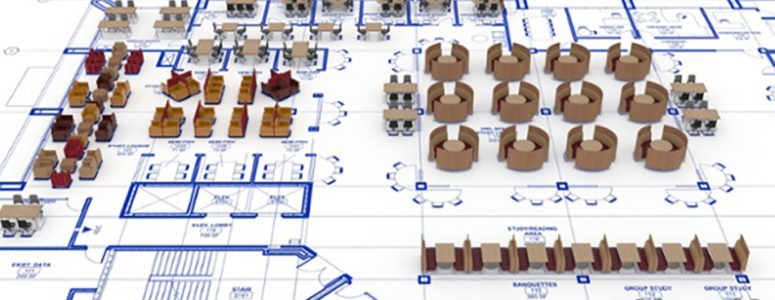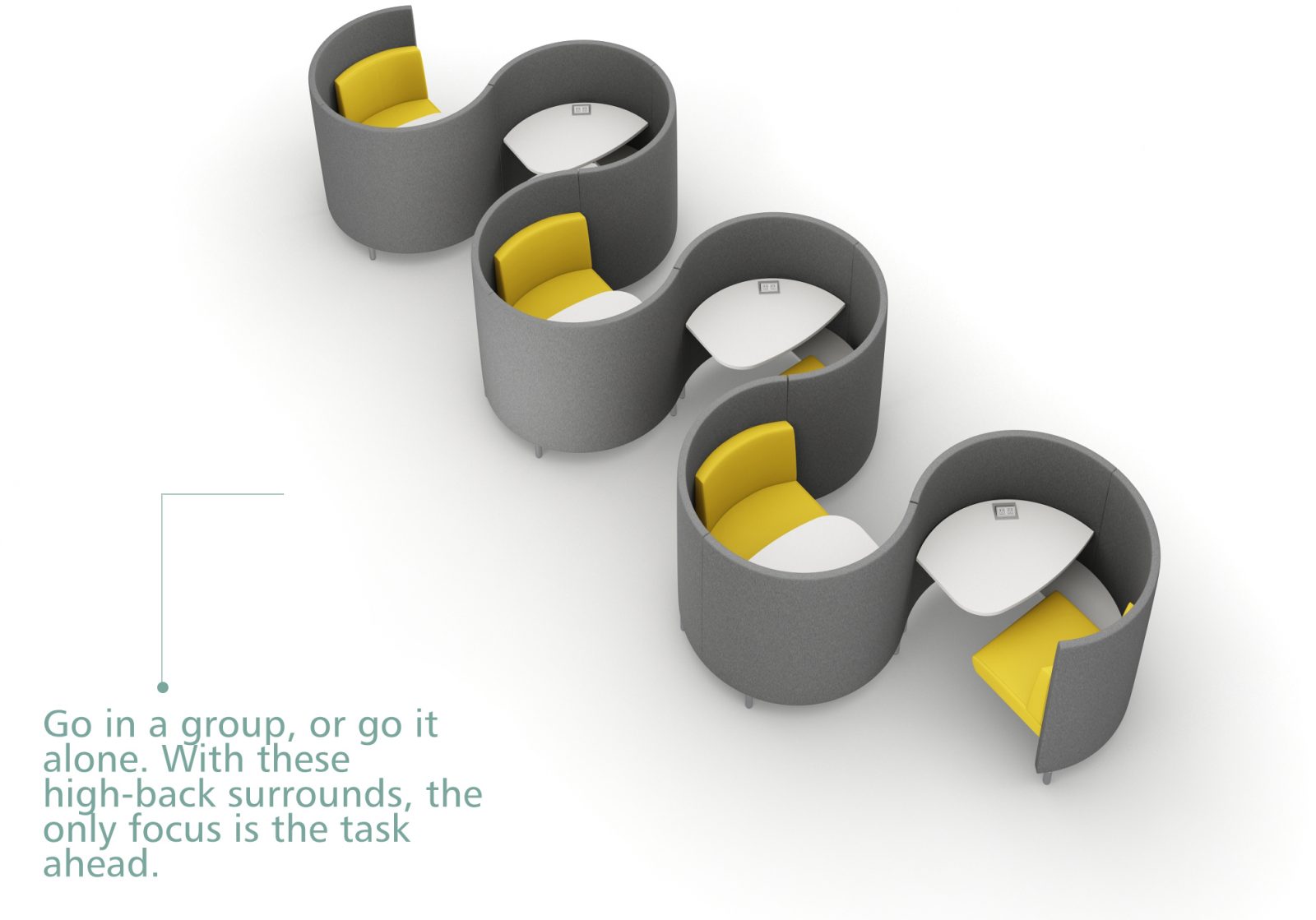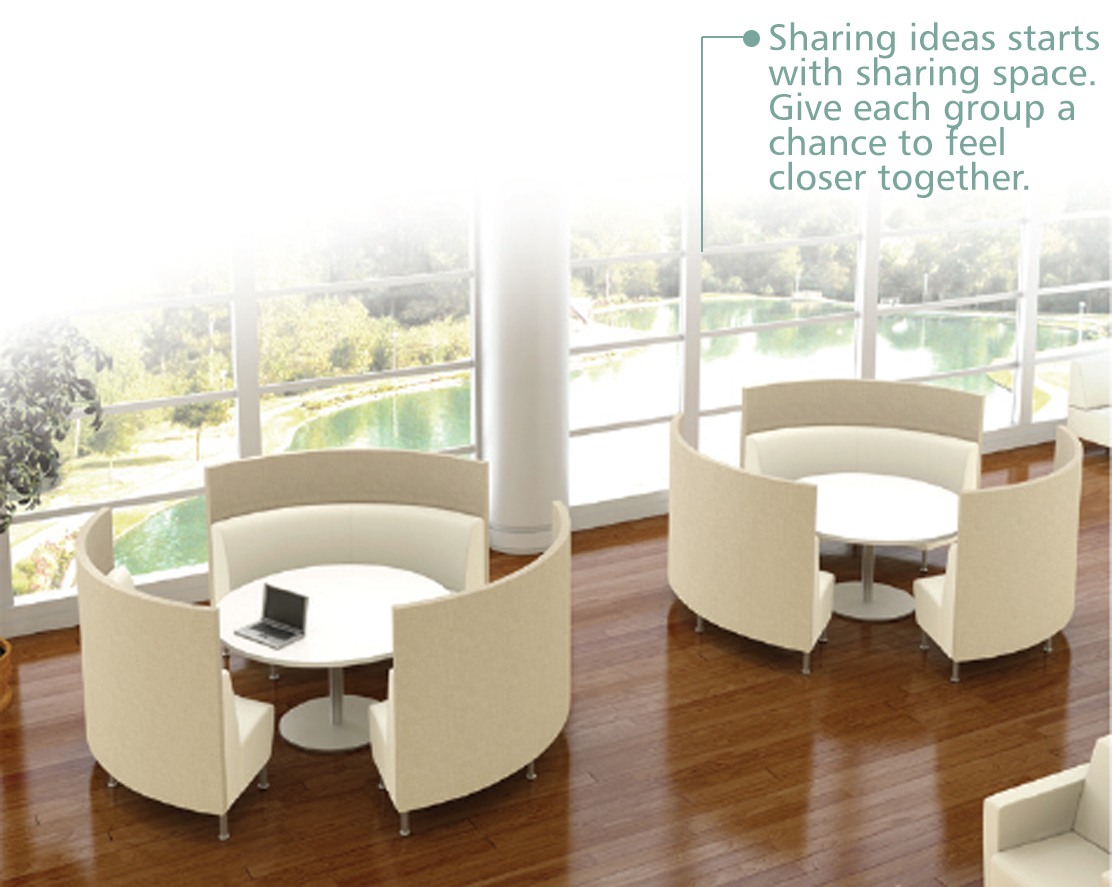
What do you know about the people who visit your space each day of the week? Who are they? What do they want to accomplish when they walk through your doors?
While these may not be the first questions on your mind in the furniture decision-making process, their answers unlock the door to a design with real purpose — one where everyone who walks through your doors can relax, read, think, create and tune out the noise of today’s busy world.
You aren’t just making decisions about the chairs, tables, desks and shelves that will shape your public space. You’re studying the motivations, the desires and the behaviors of the people who fill it. Consider yourself an anthropological researcher, and ask these four questions before you redesign your space.
 How Will You Block Distractions?
How Will You Block Distractions?
Each day, the hum of outside interference grows louder. We hear the buzz of mobile phones and the whispers of coworkers. We see physical advertisements on the walls and rotating display banners at the top of our computer screens. We smell the coffee brewing in the room next door and the cologne scent the neighbor is wearing. No matter where we turn, the noise of sensory overload can feel overwhelming.
The right furniture design holds the key to turning the volume down. The chairs and couches we sit in, the desks and media centers that bear the weight of our mobile devices, the shelves and stands that hold our books and artwork — these are not simply about looks. These pieces of furniture play pivotal roles in masking the outside interferences that impede creative processes. They support our senses, acting as a doorkeeper to ensure warmth, comfort and calm.
 What Can You Do To Create Collaborative Energy?
What Can You Do To Create Collaborative Energy?
Working together doesn’t happen just by sitting next to each other. The furniture inside your space will determine how employees or customers can share ideas, offer feedback and peer through each other’s perspectives. Those feelings of comfort and calm do more than block out distractions from individual work. They are also the key ingredients for a collaborative atmosphere.
Whether you’re outfitting a library, a boardroom or a hotel lobby, approach your furniture selection with the aim to help your audience see eye-to-eye — literally. From booth seating that supports community to high-back surrounds that deliver an air of intimacy, the right furniture decisions lead to better communication and increased participation.
 Which Subtle Details Can You Not Afford To Sacrifice?
Which Subtle Details Can You Not Afford To Sacrifice?
The furniture you select will play on a team with many other players. The lighting, the layout, the upholstery — the list of additional details inside your space is long. As you make decisions on which pieces will live inside your space, you must determine the other artistic elements that will elevate the experience in your space.
In addition to aesthetics, every space must account for today’s technological demands. Today’s students and workers are accustomed to virtual learning and collaboration. Therefore, each space needs to provide the digital solutions that will connect people in different time zones who speak different languages. This requires looking beyond the basics of power sources and bandwidth to consider how technology will evolve and what those changes mean for your audience.
 Where Will You Find Funding?
Where Will You Find Funding?
One of the most overwhelming challenges facing underfunded institutions is where will the dollars come from to pay for the redesign? However, there are plenty of opportunities to secure sponsorships that will cover the costs of transforming your space. Before outlining your overhaul plans, think of which brands and organizations will benefit from increasing awareness among your captive audience. This is their chance to align with your mission, and that can be a powerful tool for their own customer engagement strategy.
Of course, you don’t want to turn your exquisite space into an advertisement. As you pursue funding, balance the desire for money with your primary goal: creating a collaborative space where everyone feels comfortable.
Need Help Finding the Answers?
Agati has used anthropology to design furniture since the 1970s to deliver highly acclaimed industrial design in education. If you’re searching for help in rethinking and reshaping your space, we’ll here to help guide you through the design process.




